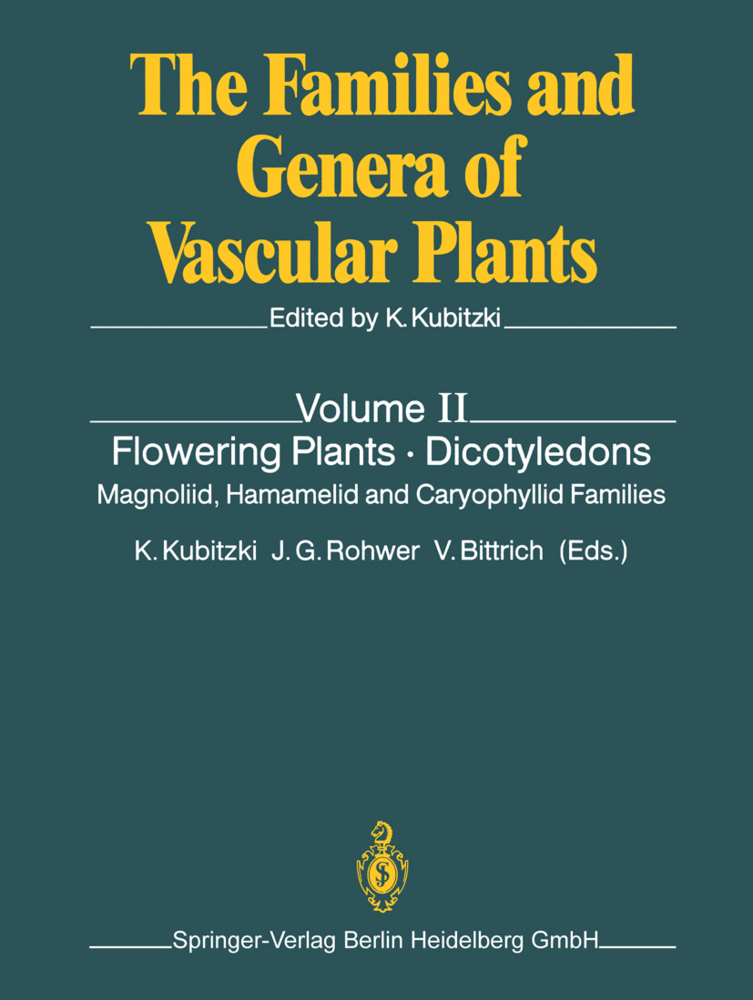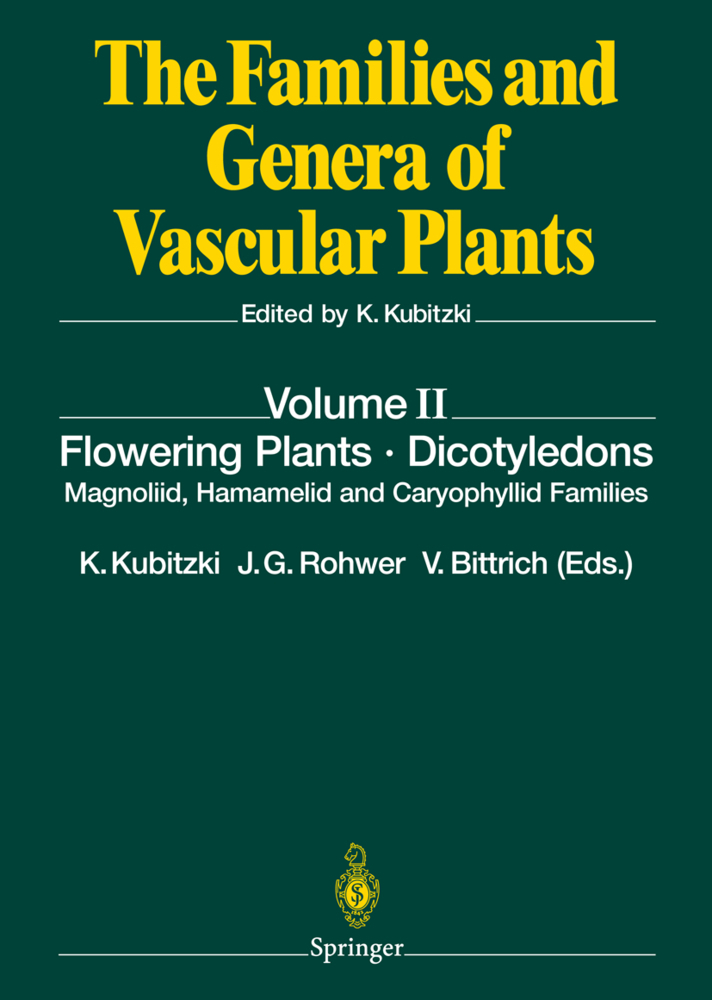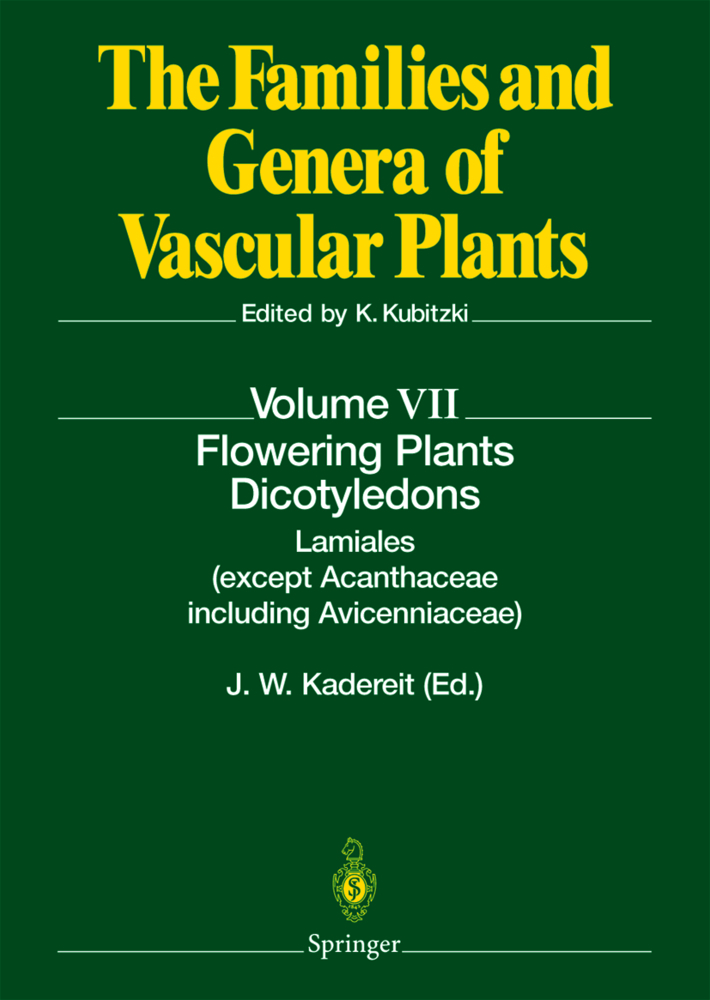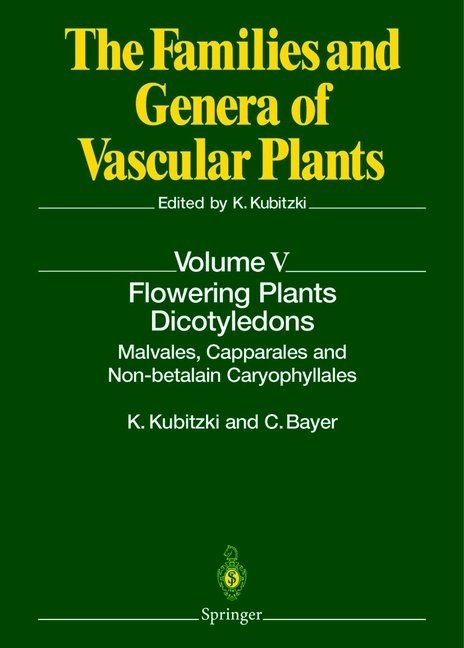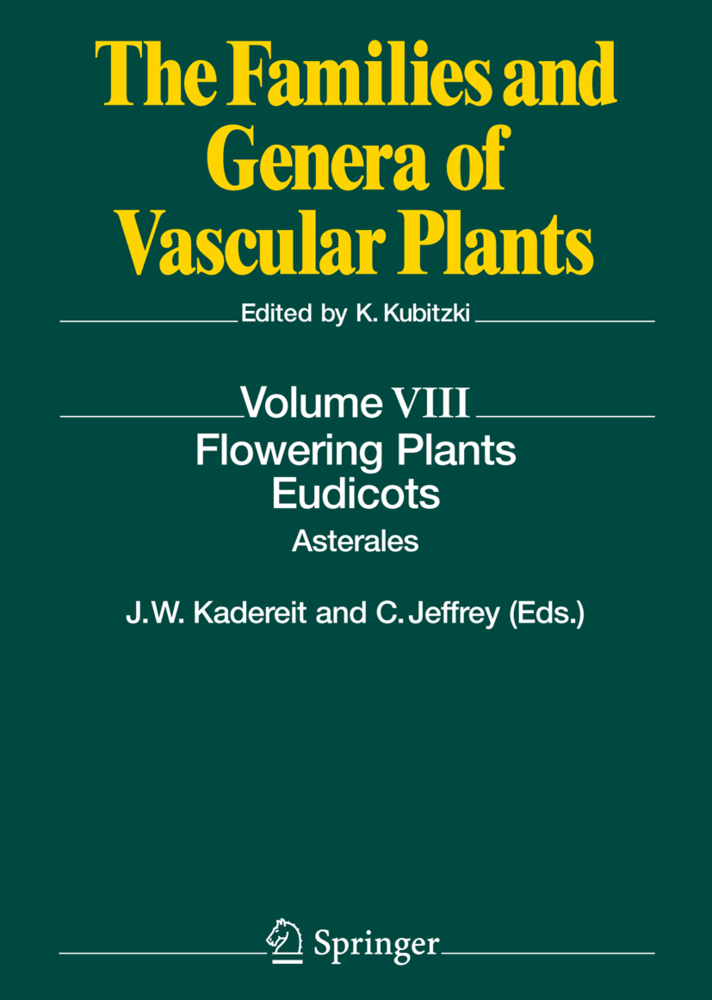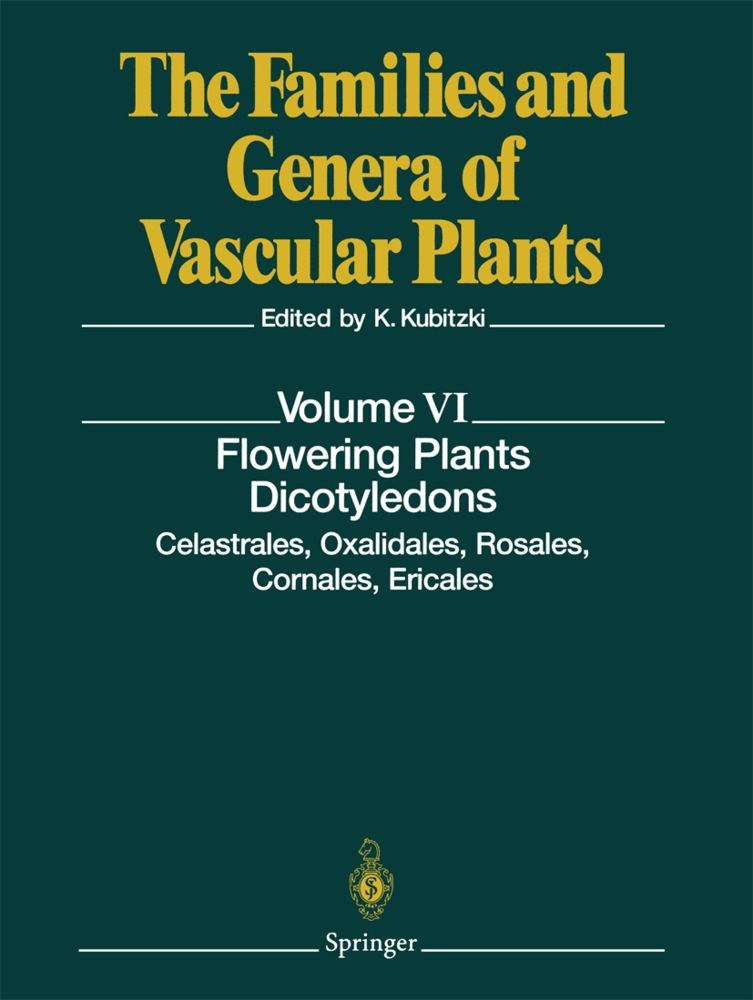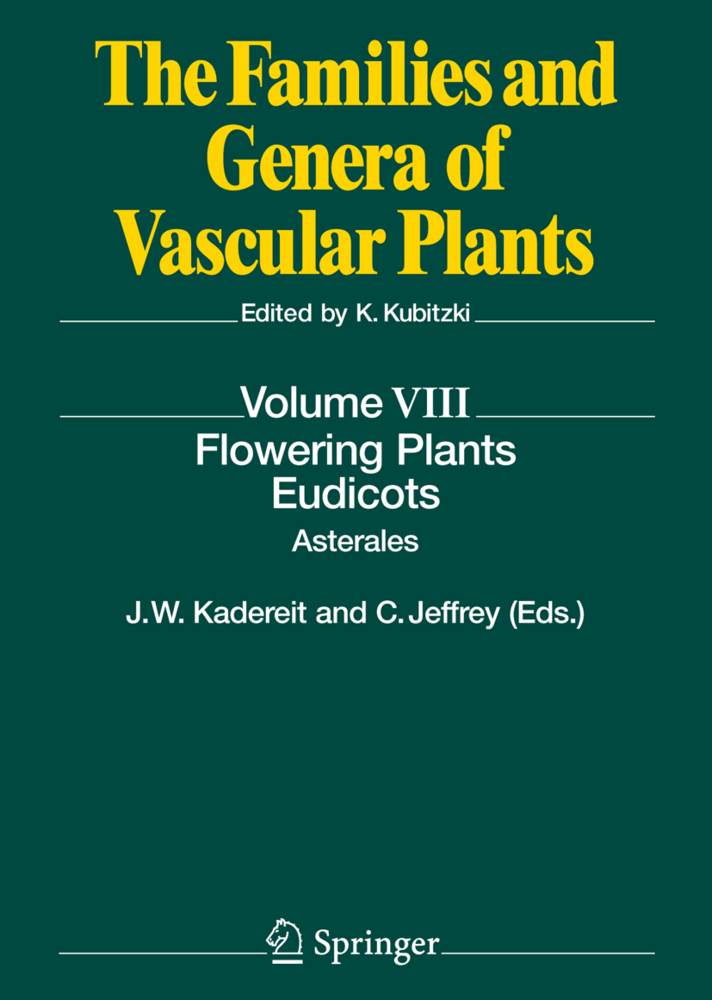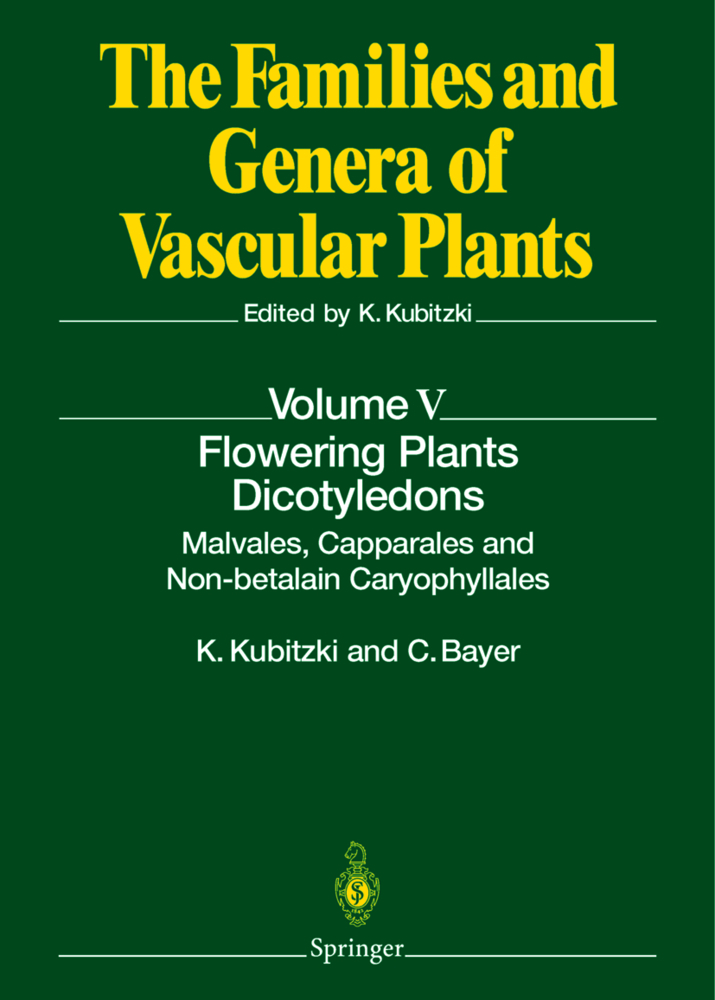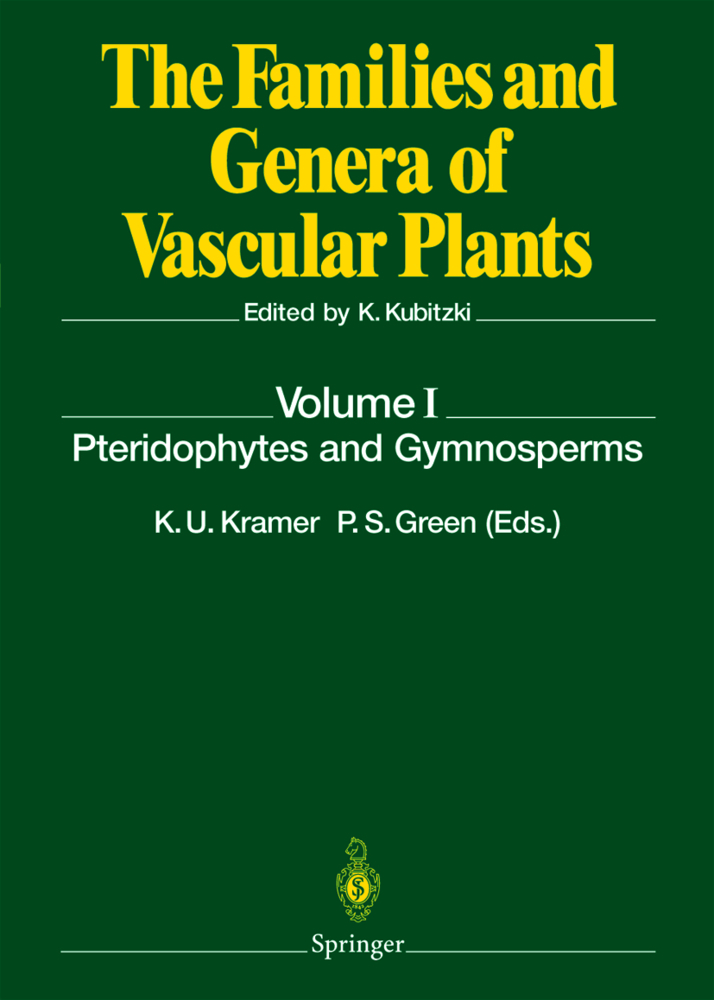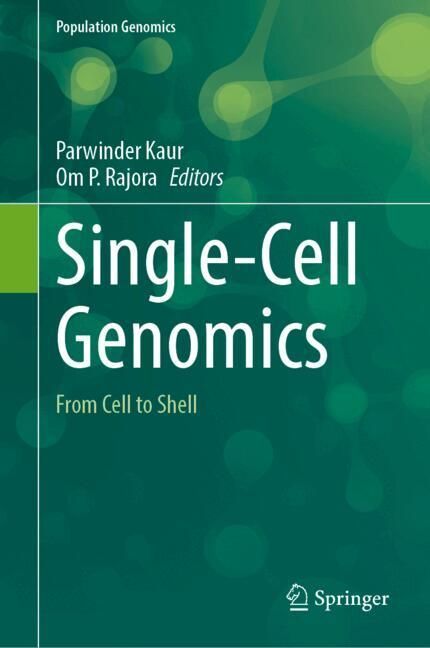Flowering Plants. Dicotyledons
Magnoliid, Hamamelid and Caryophyllid Families
Flowering Plants. Dicotyledons
Magnoliid, Hamamelid and Caryophyllid Families
This volume - the first of this series dealing with angiosperms - comprises the treatments of 73 families, representing three major blocks of the dicotyledons: magnoliids, centrosperms, and hamamelids. These blocks are generally recognized as subclasses in modern textbooks and works of reference. We consider them a convenient means for structuring the hundreds of di cotyledon families, but are far from taking them at face value for biological, let alone mono phyletic entities. Angiosperm taxa above the rank of family are little consolidated, as is easily seen when comparing various modern classifications. Genera and families, in contrast, are comparatively stable units -and they are important in practical terms. The genus is the taxon most frequently recognized as a distinct entity even by the layman, and generic names provide the key to all in formation available about plants. The family is, as a rule, homogeneous enough to conve niently summarize biological information, yet comprehensive enough to avoid excessive re dundance. The emphasis in this series is, therefore, primarily on families and genera.
General References
Achatocarpaceae
Aizoaceae
Amaranthaceae
Amborellaceae
Annonaceae
Aristolochiaceae
Austrobaileyaceae
Barbeyaceae
Basellaceae
Berberidaceae
Betulaceae
Cabombaceae
Cactaceae
Calycanthaceae
Canellaceae
Cannabaceae
Caryophyllaceae
Casuarinaceae
Cecropiaceae
Ceratophyllaceae
Cercidiphyllaceae
Chenopodiaceae
Chloranthaceae
Circaeasteraceae
Degeneriaceae
Didiereaceae
Eupomatiaceae
Eupteleaceae
Fagaceae
Fumariaceae
Gomortegaceae
Halophytaceae
Hamamelidaceae
Hectorellaceae
Hernandiaceae
Himantandraceae
Hydnoraceae
Illiciaceae
Juglandaceae
Lactoridaceae
Lardizabalaceae
Lauraceae
Magnoliaceae
Menispermaceae
Molluginaceae
Monimiaceae
Moraceae
Myricaceae
Myristicaceae
Myrothamnaceae
Nelumbonaceae
Nyctaginaceae
Nymphaeaceae
Papaveraceae
Phytolaccaceae
Piperaceae
Platanaceae
Plumbaginaceae
Polygonaceae
Portulacaceae
Pteridophyllaceae
Rafflesiaceae
Ranunculaceae
Rhoipteleaceae
Saururaceae
Schisandraceae
Stegnospermaceae
Ticodendraceae
Trimeniaceae
Trochodendraceae
Ulmaceae
Urticaceae
Winteraceae
Index of Scientific Names.
to Centrospermae
A Chemosystematic Overview of Magnoliidae, Ranunculidae, Caryophyllidae and HamamelidaeGeneral References
Achatocarpaceae
Aizoaceae
Amaranthaceae
Amborellaceae
Annonaceae
Aristolochiaceae
Austrobaileyaceae
Barbeyaceae
Basellaceae
Berberidaceae
Betulaceae
Cabombaceae
Cactaceae
Calycanthaceae
Canellaceae
Cannabaceae
Caryophyllaceae
Casuarinaceae
Cecropiaceae
Ceratophyllaceae
Cercidiphyllaceae
Chenopodiaceae
Chloranthaceae
Circaeasteraceae
Degeneriaceae
Didiereaceae
Eupomatiaceae
Eupteleaceae
Fagaceae
Fumariaceae
Gomortegaceae
Halophytaceae
Hamamelidaceae
Hectorellaceae
Hernandiaceae
Himantandraceae
Hydnoraceae
Illiciaceae
Juglandaceae
Lactoridaceae
Lardizabalaceae
Lauraceae
Magnoliaceae
Menispermaceae
Molluginaceae
Monimiaceae
Moraceae
Myricaceae
Myristicaceae
Myrothamnaceae
Nelumbonaceae
Nyctaginaceae
Nymphaeaceae
Papaveraceae
Phytolaccaceae
Piperaceae
Platanaceae
Plumbaginaceae
Polygonaceae
Portulacaceae
Pteridophyllaceae
Rafflesiaceae
Ranunculaceae
Rhoipteleaceae
Saururaceae
Schisandraceae
Stegnospermaceae
Ticodendraceae
Trimeniaceae
Trochodendraceae
Ulmaceae
Urticaceae
Winteraceae
Index of Scientific Names.
Kubitzki, Klaus
Kubitzki, Klaus
Rohwer, Jens G.
Bittrich, Volker
| ISBN | 978-3-642-08141-5 |
|---|---|
| Artikelnummer | 9783642081415 |
| Medientyp | Buch |
| Copyrightjahr | 2011 |
| Verlag | Springer, Berlin |
| Umfang | X, 653 Seiten |
| Abbildungen | X, 653 p. 133 illus. |
| Sprache | Englisch |

